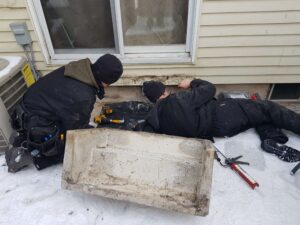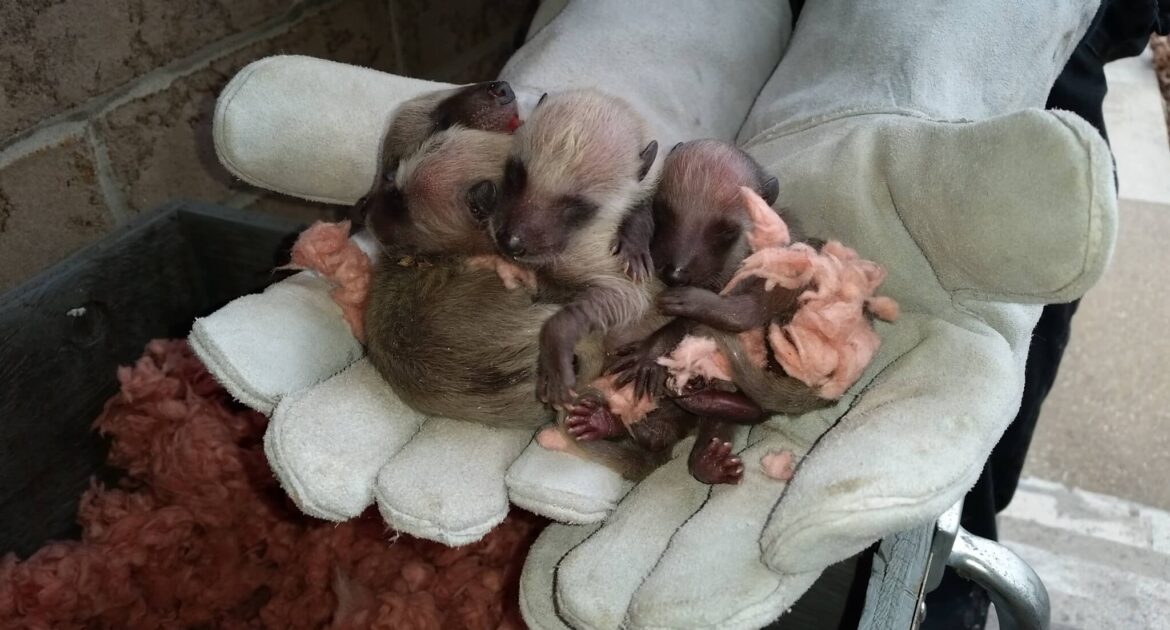A home is a place where you should feel comfortable, without fear of intrusion or exposure. While society typically shares these boundaries, wildlife does not have the same sense of restraint. For small creatures, the goal is finding a safe and warm location to nest, and unfortunately, your house often presents an optimal location. The only way to restrict wildlife access is to ensure that your house is properly sealed, preventing the need to ever get rid of mice or other creatures from inside walls or attics or chimneys.
Locating Entry Points
Locating animal entry points is not as simple as walking around your home and looking. Wildlife are clever and often need smaller entrances than you might think. Finding entry or vulnerable points around your house is about getting close to the structure and inspecting every square inch. You will need a ladder and binoculars and you will want to look where two parts of the house meet. Also, look closely around doors and windows. Finally, inspect the foundation, looking for signs of wildlife entry around small holes, cracks, or crevices.

Searching Common Entry Points
While animals can find new and ingenious ways to infiltrate your home, most often, they resort to the typical weak points of the structure. For most houses, those vulnerable entry points include any of the following:
- Roof and gable vents
- Wall vents
- Plumbing mats
- Roof and soffit intersections
- Chimneys
Removing Animals Is the Crucial First Step
Many people who choose to DIY wildlife removal, which is never advisable and can be incredibly dangerous, choose to seal everything off before ensuring that no animals are still within the structure; that is a massive mistake. If you trap an animal, not only is it inhumane, but the animal will starve and die within your home, causing a persistent and overwhelming stench, and potential health risks as well.
Professionals ensure the humane removal of animals, and they ensure that every living creature has ample opportunity to exit the structure before sealing it up. Humane wildlife removal companies will install one-way exits over entry points, meaning that the critters can leave your house but they cannot get back inside. Most companies will want to leave these devices up for two to three days, allowing ample time for the animals to vacate your home.
Before installing the one-way exits, the wildlife removal experts will thoroughly inspect the property for any evidence of a nest or babies. Obviously, if babies are present, the removal tactics will change to ensure their mother has a chance to reconnect with them.
Contact a Professional
Wild animals, no matter how cute or friendly-looking, are not domesticated, and they should never be treated as pets. Mice, raccoons, bats, squirrels all can act defensive and aggressive depending on the situation. You should never attempt to remove a wild animal from your house under any circumstances. Instead, contact a professional, ensuring they are a humane service. These professionals have the expertise to safely and legally remove animals from your property, keeping you and the wildlife safe from harm. While it is tempting to save money where you can, removing wildlife, even small rodents, is not something you should attempt without experience.
Do you believe you have mice or another animal species living or nesting in your home? Have you heard scurrying or scratching in your walls and attic space? If so, contact Skedaddle Humane Wildlife Control and schedule a property assessment. A team member will come out to your home, inspect your property and provide you with options for the safe removal of any creatures. Speed is important when dealing with wildlife in the home because damages can accrue rapidly without intervention.




